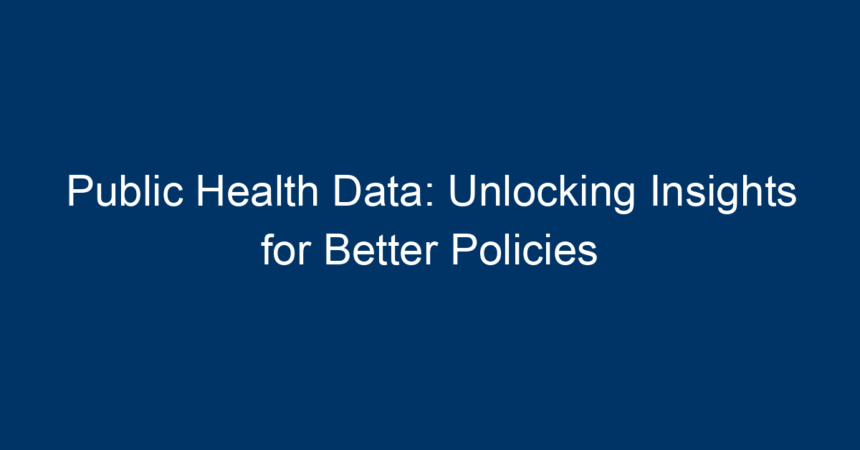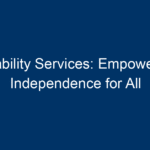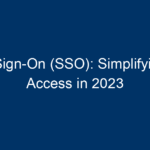In an era defined by rapid technological advancement and socio-economic shifts, public health data has emerged as a powerful tool that can significantly influence health policies and outcomes. It serves as the backbone of decision-making processes, enabling authorities to craft strategies that respond to the needs of populations more effectively. Understanding how to unlock insights from public health data can lead to improved health outcomes, informed policy-making, and ultimately, a healthier society.
What is Public Health Data?
Public health data refers to the quantitative and qualitative information collected to analyze health trends, track disease outbreaks, assess healthcare access, and evaluate the impact of health interventions. This data encompasses a variety of sources, including:
- Surveys and Reports: Household surveys, health behavior reports, and demographic data.
- Electronic Health Records (EHRs): Digital documentation of patient encounters and treatment histories.
- Vital Statistics: Birth and death certificates that help monitor population health.
- National Surveillance Systems: Data from organizations like the Centers for Disease Control and Prevention (CDC) that track diseases over time.
By systematically collecting and analyzing this data, public health officials can identify urgent health issues and allocate resources more efficiently.
The Importance of Public Health Data in Policymaking
1. Identifying Health Trends
One of the primary uses of public health data is to identify trends in different health indicators. These indicators might include:
- Prevalence of Chronic Diseases: Tracking conditions like diabetes or heart disease over time.
- Infectious Disease Outbreaks: Early detection of diseases such as influenza or COVID-19.
By analyzing trends, policymakers can understand which health issues are on the rise, allowing them to allocate resources to address these emerging problems effectively.
2. Informing Resource Allocation
When resources are limited, it is crucial to direct them where they can have the most significant impact. Public health data allows for evidence-based decision-making, enabling policymakers to:
- Target Interventions: Focus health campaigns where they are needed most.
- Budget Appropriately: Allocate funds to programs that demonstrate effectiveness in improving health outcomes.
By clearly understanding local and regional health needs, public health agencies can ensure that resources are used efficiently and sustainably.
3. Measuring Effectiveness of Health Policies
Public health data enables researchers and policymakers to assess the effectiveness of existing health policies. By analyzing data before and after the implementation of a policy, officials can determine whether the desired results were achieved. For instance:
- Evaluating Vaccination Programs: Analyzing immunization rates and subsequent disease incidence.
- Assessing Public Health Campaigns: Measuring changes in health behaviors post-campaign.
Through this analysis, policymakers can increase accountability and ensure that successful initiatives are expanded while ineffective ones are revised or discontinued.
Case Studies: Real-World Applications of Public Health Data
1. The COVID-19 Pandemic Response
The COVID-19 pandemic highlighted the critical role of public health data in real-time decision-making. Governments and health organizations relied heavily on data from various sources to guide their responses. Key strategies included:
- Diease Surveillance: Tracking infections and hospitalizations to inform lockdown measures and resource allocation.
- Vaccination Rollout: Utilizing demographic data to prioritize high-risk groups for vaccination.
The effective use of public health data allowed for timely, data-backed decisions that could significantly mitigate the virus’s spread.
2. Tobacco Control Policies
Data has been instrumental in shaping tobacco control policies. In the United States, the National Health Interview Survey (NHIS) and Behavioral Risk Factor Surveillance System (BRFSS) provide critical insights into smoking prevalence. This information enabled policymakers to:
- Implement Smoke-Free Laws: Use data to demonstrate the risks of secondhand smoke, leading to legislative changes.
- Advertising Restrictions: Target ads to younger populations based on data trends, reducing smoking initiation rates.
These initiatives showcase how public health data can influence behavior and improve public health outcomes.
Challenges in Utilizing Public Health Data
Despite its importance, several challenges hinder the effective use of public health data:
1. Data Privacy Concerns
The collection and dissemination of public health data raise ethical concerns regarding privacy. Ensuring that individual data is anonymized is crucial to maintaining public trust. Policymakers must balance the need for data access with the protection of individual privacy rights.
2. Data Quality and Standardization
The effectiveness of public health data relies on its accuracy and reliability. Inconsistent data collection methods can lead to misleading conclusions, making it essential for public health agencies to establish standardized protocols.
3. Accessibility of Data
Not all public health data is readily available to policymakers and the public. Efforts should be made to ensure that data is accessible, user-friendly, and understandable, promoting transparency and allowing for collaborative approaches to problem-solving.
The Future of Public Health Data
The future of public health data looks promising, driven by technological advancements such as artificial intelligence (AI) and machine learning. These technologies can enhance data analysis capabilities, providing deeper insights and predictive models that help in anticipating health trends.
1. Integrating Big Data
The increased integration of data from diverse sources, including social media, wearable technology, and EHRs, can offer a more comprehensive view of health trends. This multidimensional approach can enhance predictive analytics, empowering public health officials to craft more proactive strategies.
2. Citizen Engagement in Data Collection
Engaging citizens in data collection through health apps and surveys can enrich the data landscape. This participatory approach provides real-time insights and fosters community involvement, ensuring that public health policies reflect the needs and concerns of the population.
Conclusion: Actionable Insights for Policymakers
Public health data plays a pivotal role in shaping effective health policies, driving improvements in population health. Here are some actionable insights for policymakers:
- Invest in Data Infrastructure: Allocate resources for robust data systems that enhance the quality and accessibility of public health data.
- Promote Data Literacy: Train public health officials and stakeholders in data analysis to improve understanding and application of public health data.
- Foster Collaboration: Create partnerships between public health agencies, academic institutions, and community organizations to enhance data collection and sharing.
- Prioritize Transparency: Engage the public by making data accessible and understandable to build trust and encourage participation in health initiatives.
By harnessing the insights derived from public health data, we can pave the way for more informed, effective health policies that ultimately lead to better health outcomes for all. The journey to a healthier society starts with data—let’s use it wisely.




